As an Amazon Associate Playpedalsteel.com earns from qualifying purchases. This page contains affiliate links.
When it comes to the expressiveness of musical instruments, there is nothing quite like the sound of an object sliding against strings to produce tones. Sharing this in common, both the pedal steel and slide guitar are known for their distinct timbre and players use a bar or slide respectively to sound notes on these instruments.
The main difference between pedal steel and slide guitar is that a pedal steel has floor pedals and knee levers to mechanically raise or lower the pitches of notes on strings, while a slide guitar does not. Pedal steel players use a bar to sustain notes as they play, compared to a slide for guitar, which slide guitar players wear on their finger as they play.
Although there are many similarities to pedal steel and slide guitar, they are often considered to be completely different instruments from a musical standpoint. Let’s take a closer look at the differences between pedal steel and slide guitar…
The Sound and Timbre
Both pedal steel and slide guitar have the distinct ability to sustain notes using an object, which a player can use to create vibrato and also various articulations of notes. In this manner, both instruments have a very vocal sounding quality to them and are often recognizable within songs to listeners.
Since pedal steel usually employs the use of pedals and levers to change the pitches of notes as well, there is a distinguishable sound when the pedal steel is played. Often the pedals are used in a manner where the mechanical string bends are heard within the music played, often in the form of riffs, fills, or licks. However, pedal steel players can utilize the pedals and levers to change chords, harmonize notes, create glissando effects, and more.
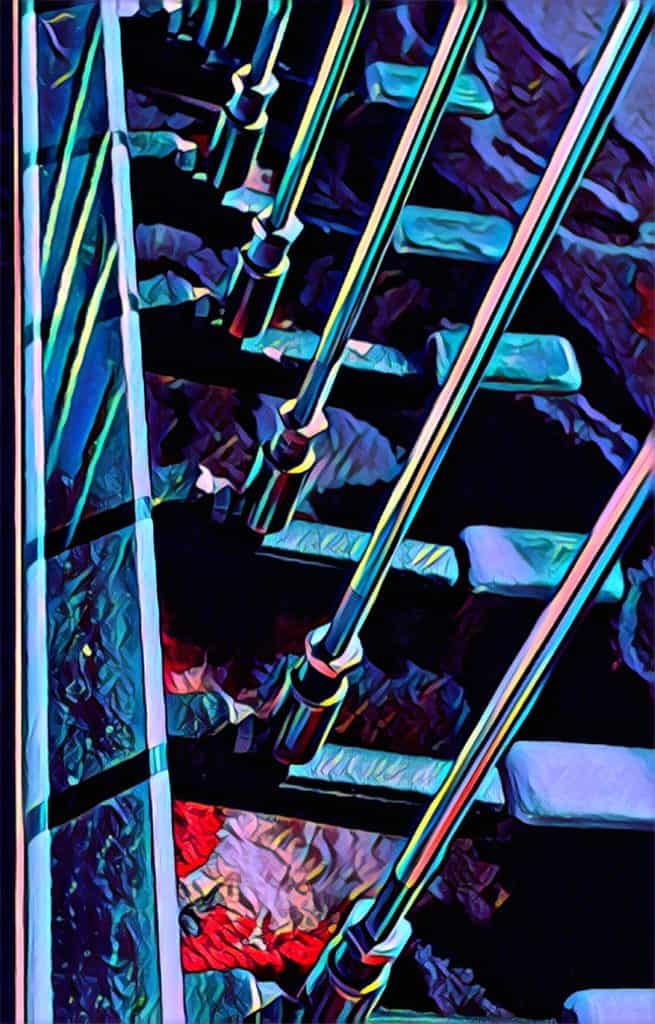
Slide guitar has a very similar tonality to pedal steel, however there are usually no options for changing pitches mechanically on the guitar as you play. Thus, slide guitar usually utilizes specific tunings, playing positions, string combinations/voicings, and sometimes even a player’s fingers.
The most common element in the sound of pedal steel and slide guitar is the sound of the object itself against the strings, which when combined with vibrato, sustain, and particular articulations of notes produce a noteworthy sound.
Using a Bar vs. Using a Slide
Pedal steel bars are often cylindrical, solid, and are usually made out of metal. Slides for slide guitar are also cylindrical, however they’re usually hollowed out inside to allow a player to wear the slide around their finger. Slides can be hollowed out all the way through both ends, or have one end closed like a bottleneck type of slide.
Often heavier in weight and larger in size, pedal steel bars are held by the player in their left hand as they play. The player uses their bar hand to apply downward pressure against the strings to sustain notes as they play, sitting down behind the instrument like a keyboard player does. The bar rests on top of the strings, and the player pushes downward with slight pressure, allowing gravity and force to sustain the notes on the strings.
For slide guitar, usually a player plays the guitar in a more upright manner than pedal steel (slide guitar is usually played similarly to regular guitar from a posture standpoint). Because of this, a player needs an object that can be more attached against their finger(s) so that they can control it as they play.
This is why slides for slide guitar are usually hollow, as a player can have more control over moving the slide when it is worn around their finger. Most bars for pedal steel are made out of metal, while slides for guitar are often made out of metal, glass, and other materials.
Styles of Music
Both pedal steel and slide guitar can be heard in many forms and styles of music, however each certainly have made a cultural impact to some styles of music. Pedal steel was often known for its use within classic country, Western swing, honky-tonk, and Hawaiian musical styles, especially in the earlier 1900s and the 1960s-1970s.
Slide guitar is often recognized for its sound within blues and rock music, especially the Mississippi Delta blues tradition. Duane Allman helped further popularize the sound of slide guitar in the 1960s and 1970s, with the distinct glass slide sounds and techniques he added on electric guitar to the Allman Brothers Bands’ music.
Because of their versatility in sound and articulation, as well as the popularity of stringed instruments in general, both pedal steel and slide guitar work well for a variety of music. Many players of both instruments have had success within the jazz, pop, rock, country, Americana, singer-songwriter, blues, folk, and many other styles of music.
Equipment, Accessories, and Gear
Both pedal steels and slide guitars usually use an amplifier to make their sound more audible to listeners, however slide guitar can also be played acoustically. Pedal steels almost always require amplification, as few are made acoustically.
Slide guitars often require (or benefit from) a raised string action and height compared to regular guitar. This prevents the slide from “bottoming out” on the fretboard as notes are sustained, which allows a player the freedom to move the slide along the strings in a smooth, continuous manner. Pedal steels don’t have actual frets (and a player never uses their fingers for fretting like on regular guitar), so the string height from the body of the pedal steel is much higher than on a slide guitar.
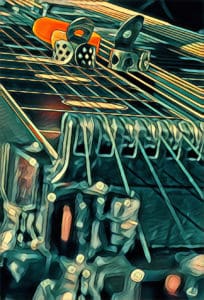
Pedal steels usually have legs, a pedal bar, and pedal rods that connect to the body of the guitar, and these parts are usually kept with the pedal steel in its case when not assembled. While playing, these parts are attached to the pedal steel to allow it to stand upright on the floor, and which help mechanically produce the string raises and lowers that the pedals and knee levers are used for.
Most pedal steel players also use a volume pedal as they play, which can help further sustain notes for playing and musical expressions. A volume pedal can be used for slide guitar in the same way, however it isn’t always traditionally used like it is for pedal steel.
Playing Techniques and Tips
One of the largest similarities between pedal steel and slide guitar is that players can use the bar or slide to “slide” into notes. By moving the bar or slide along a string as a note is sustained, the pitch of the note can be altered greatly by the speed and positioning of the bar or slide.
This can be used with great musical effect, and no pedals or knee levers are needed to create this sound. Because of this, pedal steel and slide guitar share a lot of common ground from a technique and playing standpoint.
Both instruments usually require a player to dampen or mute strings behind the bar or slide, to prevent unwanted tones from sounding. Also, both instruments’ players usually need to do a similar technique with their picking hand, to prevent unwanted strings from ringing out too.
Because the bar and slide for both instruments sustain notes, the use of vibrato is also used very similarly for both instruments. Also, usually players of both instruments have to pay attention to the amount of pressure they apply with the bar or slide, keeping it straight at playing positions, and producing accurate intonation with the musical environment.
Conclusion
Whether you’re interested in playing pedal steel or slide guitar for the first time, experimenting with both, or choosing one to dive deeper into, both instruments produce a sound that catches listeners’ attention. While they can be known to be challenging to play compared to other instruments, the trade-off is worthwhile if you stick with it.
You can easily try out slide guitar on many regular guitars, and begin creating sounds and music that is worth exploring more. The cost of slides for guitar are relatively inexpensive compared to the general cost of a pedal steel guitar. You can find used entry-level pedal steels in the $800-$1500 price range, which have the distinct capability of adding the pedal sounds that pedal steels are often known for.
Thanks for checking out this page, hope it is helpful and makes playing more enjoyable! If you’re interested in diving deeper into playing E9 pedal steel, check out these resources and guides…
The Chord Guide for E9 Pedal Steel (E-Book, Digital Download)
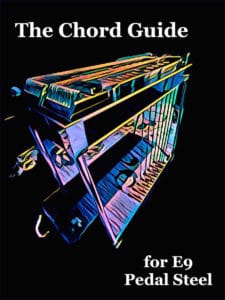
Learn the chords on the E9 neck in a way that makes playing simple and enjoyable…
- Almost Every Chord You’ll Ever Need for E9
- Intuitive and Easy to Use
- Make Use of Pedal and Lever Combinations
- Example Tabs of Chord Movements
- Easily Utilize the Nashville Number System
- Great For Any Key and Style of Music
Includes a bonus section of over a hundred pages of extra chord charts, key references, and more!
Playing Pedal Steel:
The Essentials
An easy and intuitive approach to mastering the pedal steel…
- An in-depth look at bar control, the right hand, using pedals, & the volume pedal
- Multi Angle Views – that you can always reference.
- Ways to Practice, How to Practice, What to Practice.
An online pedal steel lesson series – includes a free pedal steel EBook!
More Digital Downloads for Pedal Steel…
The Scale Book for E9 Pedal Steel
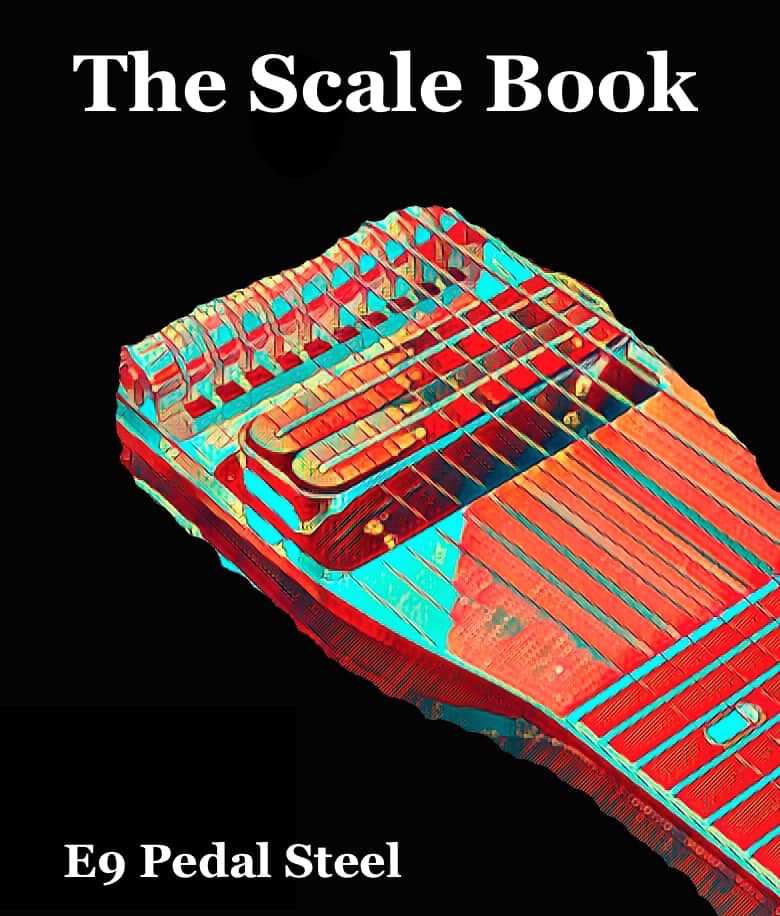
Over 1,000 Pages with Tabs and Diagrams!
- Easy to Use Reference for Practicing
- All Major and Minor Pentatonic Scales, Modes, Major Scales
- All Keys, and Covers the Fretboard
- Includes Pockets of Scales
The Art of Right Hand Technique
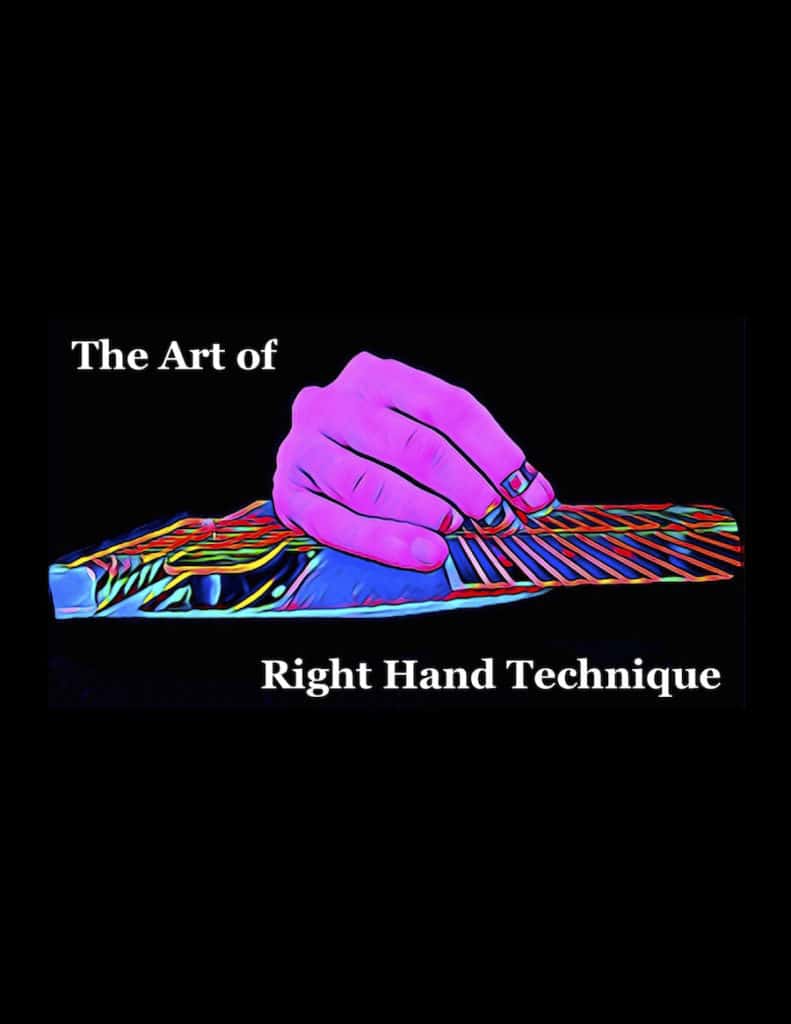
A detailed look at one of the most challenging and mysterious aspects of steel guitar playing: the right hand…
- An In-Depth Guide to Picking and Blocking
- How to Efficiently and Accurately Play Notes on Steel Guitar with Info, Advice, and Tips…
- Great for Pedal Steel, Lap Steel, and Console Steel Guitar
- Over 100 Pages with Graphics, Illustrations, & Practice Exercises
200 Country Riffs & Licks for E9 Pedal Steel
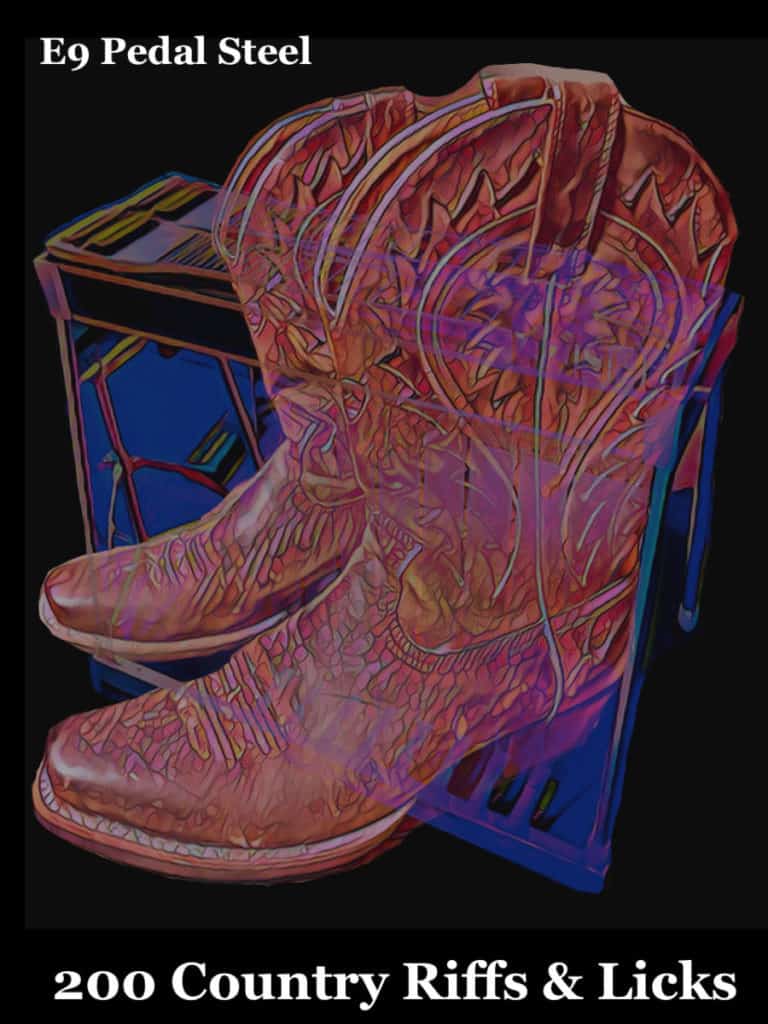
Add these country licks to your playing repertoire…
- Easy to Read Format
- Includes Rhythmic Notation
- Playing Over Chord Changes
- Great for Country, Alt-Country, & Honky-Tonk Styles
